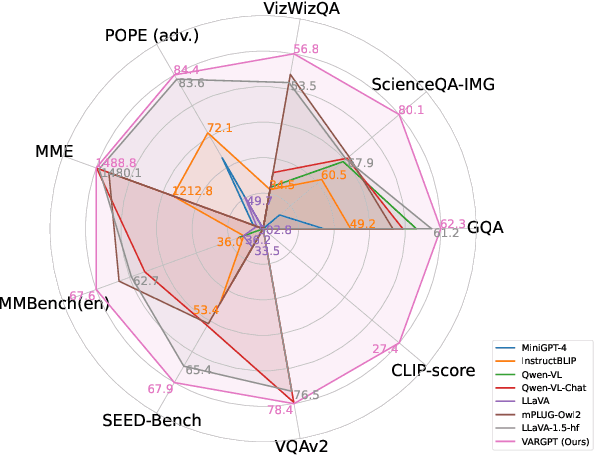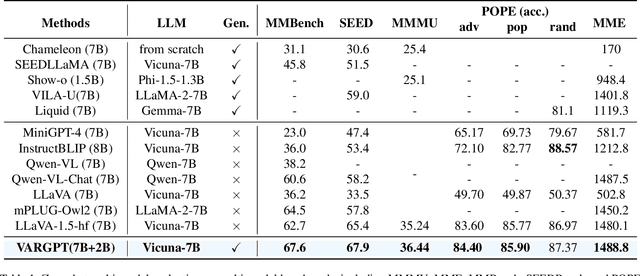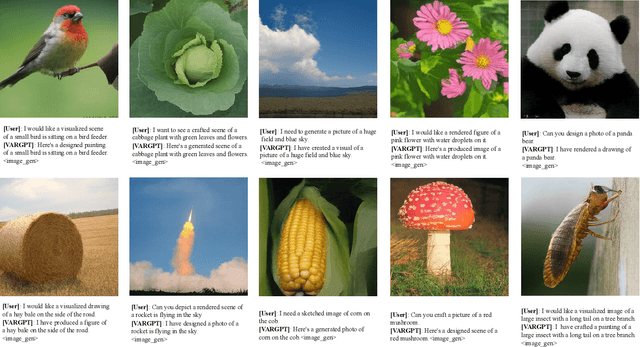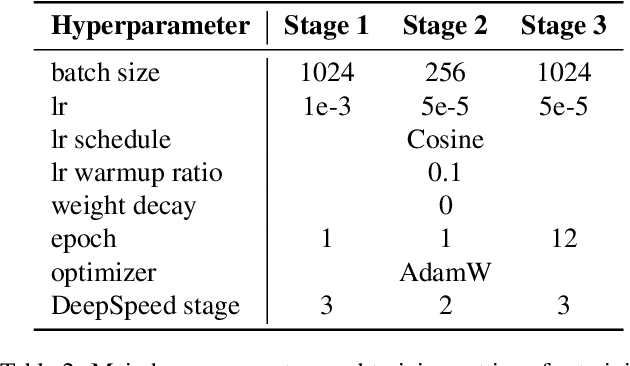Yufan Deng
MTPNet: Multi-Grained Target Perception for Unified Activity Cliff Prediction
Jun 05, 2025Abstract:Activity cliff prediction is a critical task in drug discovery and material design. Existing computational methods are limited to handling single binding targets, which restricts the applicability of these prediction models. In this paper, we present the Multi-Grained Target Perception network (MTPNet) to incorporate the prior knowledge of interactions between the molecules and their target proteins. Specifically, MTPNet is a unified framework for activity cliff prediction, which consists of two components: Macro-level Target Semantic (MTS) guidance and Micro-level Pocket Semantic (MPS) guidance. By this way, MTPNet dynamically optimizes molecular representations through multi-grained protein semantic conditions. To our knowledge, it is the first time to employ the receptor proteins as guiding information to effectively capture critical interaction details. Extensive experiments on 30 representative activity cliff datasets demonstrate that MTPNet significantly outperforms previous approaches, achieving an average RMSE improvement of 18.95% on top of several mainstream GNN architectures. Overall, MTPNet internalizes interaction patterns through conditional deep learning to achieve unified predictions of activity cliffs, helping to accelerate compound optimization and design. Codes are available at: https://github.com/ZishanShu/MTPNet.
MAGREF: Masked Guidance for Any-Reference Video Generation
May 29, 2025Abstract:Video generation has made substantial strides with the emergence of deep generative models, especially diffusion-based approaches. However, video generation based on multiple reference subjects still faces significant challenges in maintaining multi-subject consistency and ensuring high generation quality. In this paper, we propose MAGREF, a unified framework for any-reference video generation that introduces masked guidance to enable coherent multi-subject video synthesis conditioned on diverse reference images and a textual prompt. Specifically, we propose (1) a region-aware dynamic masking mechanism that enables a single model to flexibly handle various subject inference, including humans, objects, and backgrounds, without architectural changes, and (2) a pixel-wise channel concatenation mechanism that operates on the channel dimension to better preserve appearance features. Our model delivers state-of-the-art video generation quality, generalizing from single-subject training to complex multi-subject scenarios with coherent synthesis and precise control over individual subjects, outperforming existing open-source and commercial baselines. To facilitate evaluation, we also introduce a comprehensive multi-subject video benchmark. Extensive experiments demonstrate the effectiveness of our approach, paving the way for scalable, controllable, and high-fidelity multi-subject video synthesis. Code and model can be found at: https://github.com/MAGREF-Video/MAGREF
OpenS2V-Nexus: A Detailed Benchmark and Million-Scale Dataset for Subject-to-Video Generation
May 28, 2025Abstract:Subject-to-Video (S2V) generation aims to create videos that faithfully incorporate reference content, providing enhanced flexibility in the production of videos. To establish the infrastructure for S2V generation, we propose OpenS2V-Nexus, consisting of (i) OpenS2V-Eval, a fine-grained benchmark, and (ii) OpenS2V-5M, a million-scale dataset. In contrast to existing S2V benchmarks inherited from VBench that focus on global and coarse-grained assessment of generated videos, OpenS2V-Eval focuses on the model's ability to generate subject-consistent videos with natural subject appearance and identity fidelity. For these purposes, OpenS2V-Eval introduces 180 prompts from seven major categories of S2V, which incorporate both real and synthetic test data. Furthermore, to accurately align human preferences with S2V benchmarks, we propose three automatic metrics, NexusScore, NaturalScore and GmeScore, to separately quantify subject consistency, naturalness, and text relevance in generated videos. Building on this, we conduct a comprehensive evaluation of 16 representative S2V models, highlighting their strengths and weaknesses across different content. Moreover, we create the first open-source large-scale S2V generation dataset OpenS2V-5M, which consists of five million high-quality 720P subject-text-video triples. Specifically, we ensure subject-information diversity in our dataset by (1) segmenting subjects and building pairing information via cross-video associations and (2) prompting GPT-Image-1 on raw frames to synthesize multi-view representations. Through OpenS2V-Nexus, we deliver a robust infrastructure to accelerate future S2V generation research.
Anymate: A Dataset and Baselines for Learning 3D Object Rigging
May 09, 2025Abstract:Rigging and skinning are essential steps to create realistic 3D animations, often requiring significant expertise and manual effort. Traditional attempts at automating these processes rely heavily on geometric heuristics and often struggle with objects of complex geometry. Recent data-driven approaches show potential for better generality, but are often constrained by limited training data. We present the Anymate Dataset, a large-scale dataset of 230K 3D assets paired with expert-crafted rigging and skinning information -- 70 times larger than existing datasets. Using this dataset, we propose a learning-based auto-rigging framework with three sequential modules for joint, connectivity, and skinning weight prediction. We systematically design and experiment with various architectures as baselines for each module and conduct comprehensive evaluations on our dataset to compare their performance. Our models significantly outperform existing methods, providing a foundation for comparing future methods in automated rigging and skinning. Code and dataset can be found at https://anymate3d.github.io/.
MagicComp: Training-free Dual-Phase Refinement for Compositional Video Generation
Mar 18, 2025Abstract:Text-to-video (T2V) generation has made significant strides with diffusion models. However, existing methods still struggle with accurately binding attributes, determining spatial relationships, and capturing complex action interactions between multiple subjects. To address these limitations, we propose MagicComp, a training-free method that enhances compositional T2V generation through dual-phase refinement. Specifically, (1) During the Conditioning Stage: We introduce the Semantic Anchor Disambiguation to reinforces subject-specific semantics and resolve inter-subject ambiguity by progressively injecting the directional vectors of semantic anchors into original text embedding; (2) During the Denoising Stage: We propose Dynamic Layout Fusion Attention, which integrates grounding priors and model-adaptive spatial perception to flexibly bind subjects to their spatiotemporal regions through masked attention modulation. Furthermore, MagicComp is a model-agnostic and versatile approach, which can be seamlessly integrated into existing T2V architectures. Extensive experiments on T2V-CompBench and VBench demonstrate that MagicComp outperforms state-of-the-art methods, highlighting its potential for applications such as complex prompt-based and trajectory-controllable video generation. Project page: https://hong-yu-zhang.github.io/MagicComp-Page/.
CINEMA: Coherent Multi-Subject Video Generation via MLLM-Based Guidance
Mar 13, 2025Abstract:Video generation has witnessed remarkable progress with the advent of deep generative models, particularly diffusion models. While existing methods excel in generating high-quality videos from text prompts or single images, personalized multi-subject video generation remains a largely unexplored challenge. This task involves synthesizing videos that incorporate multiple distinct subjects, each defined by separate reference images, while ensuring temporal and spatial consistency. Current approaches primarily rely on mapping subject images to keywords in text prompts, which introduces ambiguity and limits their ability to model subject relationships effectively. In this paper, we propose CINEMA, a novel framework for coherent multi-subject video generation by leveraging Multimodal Large Language Model (MLLM). Our approach eliminates the need for explicit correspondences between subject images and text entities, mitigating ambiguity and reducing annotation effort. By leveraging MLLM to interpret subject relationships, our method facilitates scalability, enabling the use of large and diverse datasets for training. Furthermore, our framework can be conditioned on varying numbers of subjects, offering greater flexibility in personalized content creation. Through extensive evaluations, we demonstrate that our approach significantly improves subject consistency, and overall video coherence, paving the way for advanced applications in storytelling, interactive media, and personalized video generation.
VARGPT: Unified Understanding and Generation in a Visual Autoregressive Multimodal Large Language Model
Jan 21, 2025



Abstract:We present VARGPT, a novel multimodal large language model (MLLM) that unifies visual understanding and generation within a single autoregressive framework. VARGPT employs a next-token prediction paradigm for visual understanding and a next-scale prediction paradigm for visual autoregressive generation. VARGPT innovatively extends the LLaVA architecture, achieving efficient scale-wise autoregressive visual generation within MLLMs while seamlessly accommodating mixed-modal input and output within a single model framework. Our VARGPT undergoes a three-stage unified training process on specially curated datasets, comprising a pre-training phase and two mixed visual instruction-tuning phases. The unified training strategy are designed to achieve alignment between visual and textual features, enhance instruction following for both understanding and generation, and improve visual generation quality, respectively. Despite its LLAVA-based architecture for multimodel understanding, VARGPT significantly outperforms LLaVA-1.5 across various vision-centric benchmarks, such as visual question-answering and reasoning tasks. Notably, VARGPT naturally supports capabilities in autoregressive visual generation and instruction-to-image synthesis, showcasing its versatility in both visual understanding and generation tasks. Project page is at: \url{https://vargpt-1.github.io/}
VideoTetris: Towards Compositional Text-to-Video Generation
Jun 06, 2024Abstract:Diffusion models have demonstrated great success in text-to-video (T2V) generation. However, existing methods may face challenges when handling complex (long) video generation scenarios that involve multiple objects or dynamic changes in object numbers. To address these limitations, we propose VideoTetris, a novel framework that enables compositional T2V generation. Specifically, we propose spatio-temporal compositional diffusion to precisely follow complex textual semantics by manipulating and composing the attention maps of denoising networks spatially and temporally. Moreover, we propose an enhanced video data preprocessing to enhance the training data regarding motion dynamics and prompt understanding, equipped with a new reference frame attention mechanism to improve the consistency of auto-regressive video generation. Extensive experiments demonstrate that our VideoTetris achieves impressive qualitative and quantitative results in compositional T2V generation. Code is available at: https://github.com/YangLing0818/VideoTetris
I2V-Adapter: A General Image-to-Video Adapter for Video Diffusion Models
Dec 27, 2023



Abstract:In the rapidly evolving domain of digital content generation, the focus has shifted from text-to-image (T2I) models to more advanced video diffusion models, notably text-to-video (T2V) and image-to-video (I2V). This paper addresses the intricate challenge posed by I2V: converting static images into dynamic, lifelike video sequences while preserving the original image fidelity. Traditional methods typically involve integrating entire images into diffusion processes or using pretrained encoders for cross attention. However, these approaches often necessitate altering the fundamental weights of T2I models, thereby restricting their reusability. We introduce a novel solution, namely I2V-Adapter, designed to overcome such limitations. Our approach preserves the structural integrity of T2I models and their inherent motion modules. The I2V-Adapter operates by processing noised video frames in parallel with the input image, utilizing a lightweight adapter module. This module acts as a bridge, efficiently linking the input to the model's self-attention mechanism, thus maintaining spatial details without requiring structural changes to the T2I model. Moreover, I2V-Adapter requires only a fraction of the parameters of conventional models and ensures compatibility with existing community-driven T2I models and controlling tools. Our experimental results demonstrate I2V-Adapter's capability to produce high-quality video outputs. This performance, coupled with its versatility and reduced need for trainable parameters, represents a substantial advancement in the field of AI-driven video generation, particularly for creative applications.
DragVideo: Interactive Drag-style Video Editing
Dec 03, 2023



Abstract:Editing visual content on videos remains a formidable challenge with two main issues: 1) direct and easy user control to produce 2) natural editing results without unsightly distortion and artifacts after changing shape, expression and layout. Inspired by DragGAN, a recent image-based drag-style editing technique, we address above issues by proposing DragVideo, where a similar drag-style user interaction is adopted to edit video content while maintaining temporal consistency. Empowered by recent diffusion models as in DragDiffusion, DragVideo contains the novel Drag-on-Video U-Net (DoVe) editing method, which optimizes diffused video latents generated by video U-Net to achieve the desired control. Specifically, we use Sample-specific LoRA fine-tuning and Mutual Self-Attention control to ensure faithful reconstruction of video from the DoVe method. We also present a series of testing examples for drag-style video editing and conduct extensive experiments across a wide array of challenging editing tasks, such as motion editing, skeleton editing, etc, underscoring DragVideo's versatility and generality. Our codes including the DragVideo web user interface will be released.
 Add to Chrome
Add to Chrome Add to Firefox
Add to Firefox Add to Edge
Add to Edge